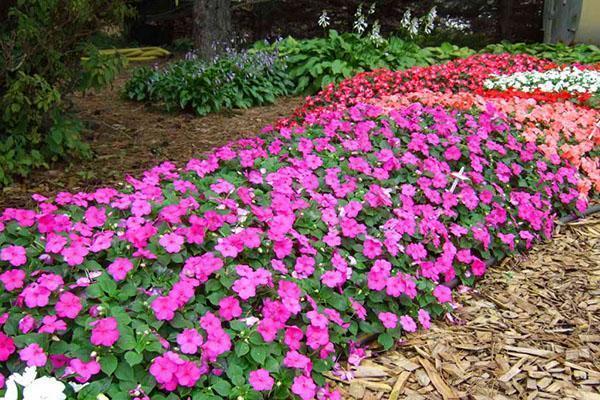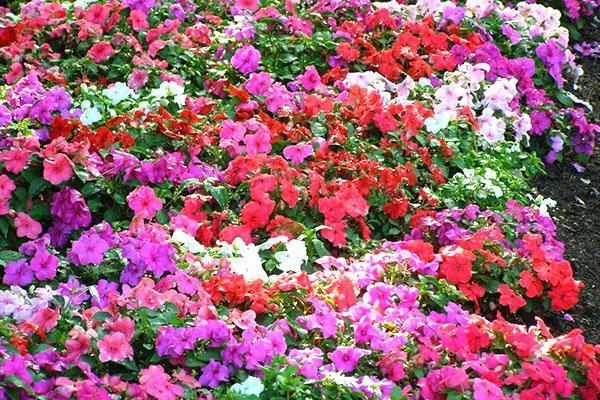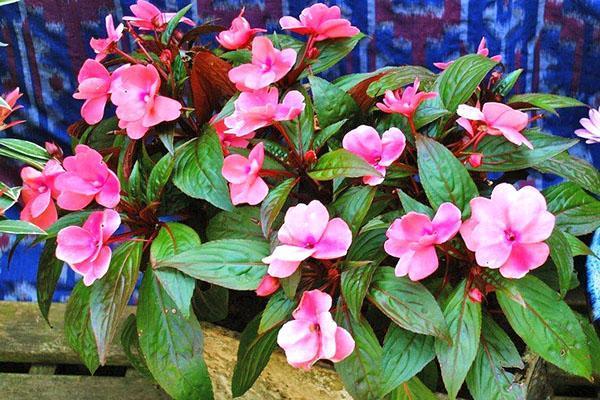Planting, care and methods of propagation of garden balsam
 Garden balsam is one of the favorite plants of flower growers, because it is not only extremely easy to care for and reproduce, but also attractive in appearance. The scope of the plant is quite wide: with its help, balconies are landscaped, decorated flower beds and even use it for cutting, because it retains the brightness and beauty of the flower for a long time. If you decide to start growing garden balsam, you can be sure that no difficulties will be encountered along the way, regardless of whether you have experience in this direction.
Garden balsam is one of the favorite plants of flower growers, because it is not only extremely easy to care for and reproduce, but also attractive in appearance. The scope of the plant is quite wide: with its help, balconies are landscaped, decorated flower beds and even use it for cutting, because it retains the brightness and beauty of the flower for a long time. If you decide to start growing garden balsam, you can be sure that no difficulties will be encountered along the way, regardless of whether you have experience in this direction.
Conditions for growing balsam

The more often you loosen the ground, the more abundant and brighter the balsam will bloom. The plant loves not only watering, but also regular spraying of the leaves, which is simply vital for him when the ambient temperature is high enough and there is such a factor as dry wind. In general, garden balsam for planting and care is not too capricious, which is clearly seen in the photo. Subject to basic conditions, the plant thanks the grower with a bright and attractive appearance.
 Be careful when feeding balsam. The plant has one feature: with an excessive amount of certain substances in the soil, the leaves may turn yellow or even fall off, which, of course, will reduce the attractiveness. Also, an excess of fertilizers can slow down flowering and prevent the normal development of the bush itself. To avoid this, carefully read the instructions for complex fertilizers and use a dose that is half the recommended dose.
Be careful when feeding balsam. The plant has one feature: with an excessive amount of certain substances in the soil, the leaves may turn yellow or even fall off, which, of course, will reduce the attractiveness. Also, an excess of fertilizers can slow down flowering and prevent the normal development of the bush itself. To avoid this, carefully read the instructions for complex fertilizers and use a dose that is half the recommended dose.
How to grow balsam from seeds?
 The plant is annual, and therefore you should worry in advance about how to provide yourself with planting material. In addition, there are a fairly large number of flower varieties, each of which deserves the attention of flower growers. The issue of growing balsam from seeds always remains relevant, because it is much easier to exchange seeds of new varieties or acquire them than to find a cutting of a suitable plant.
The plant is annual, and therefore you should worry in advance about how to provide yourself with planting material. In addition, there are a fairly large number of flower varieties, each of which deserves the attention of flower growers. The issue of growing balsam from seeds always remains relevant, because it is much easier to exchange seeds of new varieties or acquire them than to find a cutting of a suitable plant.
The seeds of the plant are large, while they have one important advantage over the seeds of other color crops: their germination lasts up to eight years. Seeds collected (or purchased) in February can already be sown for seedlings - in this case, the plants will be larger and flowering will begin earlier.
 If early flowering of garden balsam is not too important for you, cultivation from seeds can be done without seedlings, directly into the ground. This should be done only after stable heat has been established. As a rule, under favorable conditions, the first shoots appear in 7-10 days.
If early flowering of garden balsam is not too important for you, cultivation from seeds can be done without seedlings, directly into the ground. This should be done only after stable heat has been established. As a rule, under favorable conditions, the first shoots appear in 7-10 days.
In order to increase the germination of balsam seeds, treat the soil with a fungicide before planting!
The ambient temperature for favorable growth should be at least 19-20 degrees. If, after planting the seeds, the weather conditions worsened, cover the area with foil or each hole separately - with a cut plastic bottle.
Propagation of balsam by cuttings
 If you want to breed a plant during the period of its active growth and flowering, not wanting to wait for the collection of seeds and next year for planting them, follow a few simple steps:
If you want to breed a plant during the period of its active growth and flowering, not wanting to wait for the collection of seeds and next year for planting them, follow a few simple steps:
- choose the most beautiful and strongest plant;
- cut off its top;
- plant the taken stalk under the film, using sand or vermiculite for this;
- after a week, transplant the stalk with the resulting roots into the ground or into a pot with peat.
If you want to get the maximum number of cuttings, select one plant and place it for several days (of course, along with a piece of soil) in a darkened room.
From a lack of light, the shoots will stretch out, and you will be able to dilute a larger amount of balsam. To do this, you will need to cut off all the elongated shoots, peel them from the lower leaves and place them in a transparent container with clean boiled water. After a few days, you will notice the appearance of roots, which is proof that such cuttings are ready to transplant into the ground.
 As you can see, balsamic care at home is quite simple. In winter, you only plant seedlings, although you can do without it. In the spring, make sure that the plants are planted correctly, and then enjoy the magnificent flowering all summer long, remembering to water the plants in a timely manner, spray their leaves, carry out the necessary fertilizing and loosen the soil.
As you can see, balsamic care at home is quite simple. In winter, you only plant seedlings, although you can do without it. In the spring, make sure that the plants are planted correctly, and then enjoy the magnificent flowering all summer long, remembering to water the plants in a timely manner, spray their leaves, carry out the necessary fertilizing and loosen the soil.